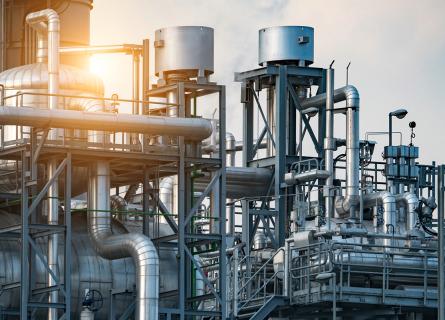
How to ensure the safety of the modernised machine?
Risk assessment and ensuring compliance are an integral part of the any machinery modernisation project and a prerequisite for the safe use of the machine after modernisation.
The modernisation of a machine is a reasonable alternative to investing in a new machine. Also, by modernising an existing machine, the efficiency of the machine can be improved, the degree of automation increased or, for example, new production as a result of changed market demand can be begun.
The need for modernisation can also stem from an old machine not meeting modern safety level requirements, which can be corrected with modernisation efforts. Modernisation can reduce the environmental impact of a machine. By upgrading an old machine, the environmental impact of manufacturing a new machine can be avoided and parts and materials of the existing machine can be utilised. Improved safety and reduced environmental impact support making an investment decision towards machine modernisation.
Ensuring safety is the key to success
In the modernisation of machines, ensuring the safety of the machine is key. By considering safety-related issues at an early stage of the project, both time and money can be saved. The modernisation project must take into account both the technical protection of the machine and the fulfilment of machine legislation requirements. Therefore, the modernisation project is an appropriate time to upgrade the machine to meet the level of current safety requirements while also fulfilling the employer's legal obligations. Risk assessment also plays a key role in managing machine-related hazards when modifying machines.
It must also consider both the identification and mitigation of possible safety deficiencies and the compliance in the modernisation project. Throughout the modernisation project, planning is based on ongoing risk assessment and corrective actions to address safety deficiencies. The aim is to proactively identify and eliminate hazards through risk assessment, but if this is not possible, the risk can be reduced through technical protection and by preventing the user from entering hazardous areas. If the elimination or reduction of the hazard is not possible through design or technical solutions, the residual risk can be managed through training, personal protective equipment as well as instructions and warnings. In a modernisation project, the safety level of the machine must be ensured during design and the safety level of the modernised machine must not be reduced.
In beginning of modernisation project, it must be identified if a completely new machine will be acquired and new CE marking shall be done. Minor changes are called modifications and they are part of the normal lifecycle of the old machine. In the case of such minor changes, there is no need for a new CE marking. In conversion work, the documentation of changes affecting safety is important and potential new hazards must be identified and assessed through risk assessment.
The clear definition of responsibilities helps with complex machine modernisation
A modernisation project typically involves several parties, such as the customer, the engineering and implementation companies and their project organisations, the owner’s own production organisation as the user of the machine, as well as numerous machine and equipment suppliers and subcontractors. Therefore, it is important to agree on the responsibilities at the earliest possible stage of the project and, if necessary, to coordinate machine safety with the assistance of an external expert and to ensure the flow of information between the parties.
In addition, the communication of all relevant information to the operational and production organisation of the modernised machinery must be ensured as they are responsible for the safe use of the machine after commissioning. In addition, the organisation’s operational and machine-related knowledge should be utilised in machine risk assessment and safety reviews during the modernisation project.
The five steps towards safe machine modernisation
The following is a summary of the five steps which will ensure that the safety issues of machine modernisation are taken into account and that the modernised machine will be safe for its users:
1. continuous risk assessment throughout the project and utilisation of the results of the risk assessment from the investment decision to the commissioning of the machine
2. a clear definition of the roles and responsibilities of the various parties involved in the project made at a sufficiently early stage
3. an assessment of the conformity of the machinery and an assessment of the significance of the changes to identify the need for a possible CE marking
4. a safety inspection of the machine before commissioning to ensure the safe operation of the machine
5. communication with and instruction for the operation and production organisation.
Did you know? We have executed several dozens of machine safety assignments globally.
AFRY's machine safety experts can help not only to select safe machines but also to identify project / machine legislation and safety requirements, as well as potential safety issues.


